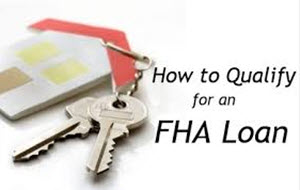FHA insured mortgage loan
 An FHA insured mortgage loan is a type of federal assistance available in the United States. Historically, FHA insured mortgage loans have been used to allow borrowers with a comparatively low income to obtain a mortgage loan large enough to make it possible for the borrower to purchase a home. FHA primarily serves people who do not have the financial resources to make a conventional down payment and/or do not qualify for private mortgage insurance (PMI).
An FHA insured mortgage loan is a type of federal assistance available in the United States. Historically, FHA insured mortgage loans have been used to allow borrowers with a comparatively low income to obtain a mortgage loan large enough to make it possible for the borrower to purchase a home. FHA primarily serves people who do not have the financial resources to make a conventional down payment and/or do not qualify for private mortgage insurance (PMI).
An FHA insured mortgage loan is a Federal Housing Administration (FHA) mortgage insurance backed mortgage loan. A common misunderstanding is that you can borrow money directly from the FHA. This is not the case – the FHA only insures loans made by private lenders.
The Federal Housing Administration (FHA) is a United States government agency. It was created during the Great Depression of the 1930’s, a period when a lot of home owners in the United States faced foreclosure and it was difficult for prospective home owner to obtain loans.
Short facts about FHA’s mortgage insurance program
- FHA’s mortgage insurance program help low-income individuals and families to become homeowners. The FHA do not provide loans; they only help to reduce the costs of a mortgage loan by providing mortgage loan insurance.
- By providing mortgage loan insurance, the FHA encourages lenders to make loans to borrowers that fail to meet the lenders’ standard underwriting requirements. The FHA protects the lender against defaults.
- FHA loans are only available in the U.S. There are a number of other countries that offer similar loans. These loans are often known by different names in different countries. The best way to find out whether a FHA type loan is available in your country is to visit a website dedicated to mortgages in that country and find out. Examples of such websites includes the German website auxmoney.com and the Swedish website internetbanklan.se.
 Obtaining an FHA insured mortgage loan
Obtaining an FHA insured mortgage loan
If you wish to obtain an FHA insured mortgage loan, we recommend that you contact several FHA-approved lenders to compare their offers. (It is up to the U.S. Department of Housing and Urban Development to decide if a lender will be FHA-approved or not, and you can contact the for more information about FHA-approved lenders.)
The FHA does not set the rates and terms of FHA insured mortgage loans; that is the privilege of each lender. It is therefore advisable to shop around and negotiate with several possible lenders to obtain the best possible rates and terms for your FHA insured mortgage loan. The lender will assess you for risk, and will for instance take your debt-to-income ratio into account, as well as your payment history on previous debts. In general, a potential borrower that fails to meet a 640 FICO score will only be offered (comparatively) high interest rates.
As a borrower, you will pay an insurance premium based on declining balances. At the time of writing, the price of FHA mortgage loan insurance is 0.5 percent on declining balances.
Back To Work – Extenuating Circumstances Program
The Back To Work – Extenuating Circumstances program will be in effect until the end of September 2016. With this program, the FHA has been permission to make provisions for home buyers who have recovered from financial troubles. The FHA can elect to reduce their requirements for certain applicants and agree to insure their mortgage loan even when the applicant fails to meet the standard FHA criteria.
Outside this program, the FHA has a mandatory three-year application waiting period for prospective borrowers with a history of foreclosure, deed-in-lieu or short sale. They also have a two-year application waiting period for prospective borrowers that have undergone a Chapter 7 or Chapter 13 bankruptcy.
To qualify for the The Back To Work – Extenuating Circumstances program, the prospective borrower must show that the foreclosure, deed-in-lieu, short sale or bankruptcy was preceded by a household income reduction of 20 percent or more that lasted for at least six months. The prospective borrower must also show a satisfactory credit history for the last 12 months.
Non-Occupying Co-Borrower
The FHA will allow a qualified non-occupant co-borrower to co-sign for a loan, if the borrower is a first-time home buyer. The co-signer doesn’t have to be a blood relative.
What is the Federal Housing Administration?
The Federal Housing Administration (FHA) was created by The National Housing Act of 1934. This was during the Great Depression of the 1930’s. Two of the tasks of the FHA was to promote the building of residential properties and operate various loan insurance programs. The FHA does not build any houses or lend any money directly; they only work through loan insurance programs and similar.
 For over three decades, the FHA was mainly an insuring agency. By the late 1960’s, its role began to expand. Eventually, the FHA was tasked with administrating interest rate subsidies, rent supplement programs, and similar.
For over three decades, the FHA was mainly an insuring agency. By the late 1960’s, its role began to expand. Eventually, the FHA was tasked with administrating interest rate subsidies, rent supplement programs, and similar.
Two important landmarks for the FHA was the Civil Rights Act of 1968 (established by the United States Department of Housing and Urban Development) and the Housing and Community Development Act (passed in 1974). In the 1980’s, the Housing and Community Development Act created a FHA rental subsidy program for middle-income households.
In the wake of the 2007 sub-prime mortgage financial crisis, the FHA launched a new refinancing program called to help home owners avoid foreclosure. In the following year, the FHA Forward program was initiated as a part of President George W. Bush’s stimulus package.
